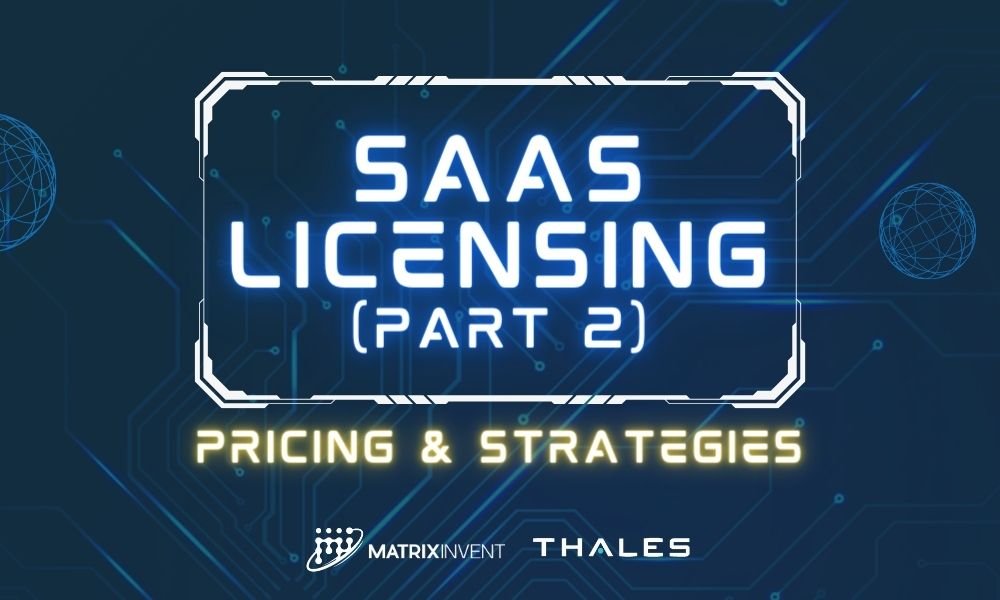Click here for Part 1 – What is SaaS Licensing?
SaaS pricing ranges from a few dollars a month to thousands. Choosing the right pricing strategy for your product involves countless factors. Developing a SaaS pricing strategy and applying it to a licensing model can help your company set rates that accurately reflect your product, are affordable, and attract customers. After you build the SaaS pricing strategy, however, don’t set it in stone. Consistently re-evaluating the SaaS pricing system every three months can help your organization keep pace with the rapidly changing market.
Pricing Strategies
A SaaS pricing strategy is the method you use to set product rates. To develop a pricing strategy, answer focus questions such as:
- What is the cost of producing the SaaS?
- What do we need to charge to make a profit?
- Who is our customer base?
- What price range would our customers be willing to pay?
- What is the current condition of the market?
- What are our business objectives?
- Who are our competitors?
Let’s take a look at five popular SaaS pricing strategies:
Price skimming
Companies price their products at the highest possible rate that customers are willing to pay and then incrementally lower the price to attract the next layer of their targeted customers. This strategy aims to “skim” sequential layers of customers by gradually reducing the price over time.
Penetration pricing
The opposite of price skimming, penetration pricing targets customers by setting initial prices on the lower end of the spectrum. Penetration pricing strives to engage a large customer base, generate brand loyalty, and crush competitors.
Value-based pricing
Value-based pricing sets the cost of the product based on customers’ understanding of its value. This method entails comprehensive market research and is especially applicable for sophisticated products with state-of-the-art features that users can’t find anywhere else.
Cost-plus pricing
Cost-plus pricing does not take into account the perceived value of the product. Instead, it bases the rates on the cost of manufacturing the product and then adds a fixed percentage.
Competitive pricing
Based on the premise that clients will flock to their product because it’s significantly cheaper than competing products, competitive pricing seeks to offer the lowest price on the market. After building a large clientele, the company raises its prices while still keeping them noticeably below the market rates.

Pricing Models
You can optimize your pricing strategy by incorporating it into an appropriate pricing model. A pricing model, also known as a licensing model, refers to the payment and licensing options you offer customers in return for using your SaaS app. Thales, for example, offers Sentinel licensing solutions that include an array of licensing models to satisfy customer needs.
Choosing the suitable models for your SaaS demands research, analysis, and trial and error. Here are five additional popular pricing models worth considering:
Freemium provides free usage. Yet if users would like to upgrade to a more advanced version, they need to pay for a subscription. Spotify uses a freemium model.
Flat-rate pricing charges every customer the same price per month, no matter how many times they use the app or how many users there are. Basecamp, for instance, uses flat-rate pricing.
Usage-based pricing charges customers based on the number of times they use the SaaS app. You usually charge them at the end of each month, based on how many times they used your software. HelpDesk has a usage-based system.
Feature-based pricing offers different options for customers to choose from. The more they pay, the more features they can use. Quickbooks uses a feature-based model.
Tiered pricing offers customers different levels to match their needs. Usually, there will be three to five tiers. Each tier includes unique features or targets customers based on their usage rate. Zendesk uses tiered pricing.
Capitalize on your pricing strategies
Developing pricing strategies and models is crucial to ensuring a high ROI. SaaS license management methods can aid your company in implementing its pricing strategies, as well as optimizing SaaS license practices.


